That’s Amarone!
The “big bitter” from Italy has wooed wine drinkers all over the world. Rich in both history and taste, the wines from Amarone continue to impress and intrigue. Guest writer Stuart George reports from his visit to Amarone in 2012, and details his best tastings from the trip.
Sixteenth century Venice, devastated by the Black Death and challenged by other sea-faring nations, nonetheless remained Europe’s preeminent vinous emporium, exporting and importing wines to and from all over the Mediterranean. Frequent wars with the Ottoman Empire caused supplies from the east (Greece and Cyprus) to be blockaded, which led the Venetians to develop vineyards in the hills around Verona. Inspired by the Greek example, strong red wine from half-dried grapes was made in Bardolino, Soave and Valpolicella.
By the nineteenth century this “Rosso Austero Costa Calda” (“austere red hot coast”), as it was referred to in Paris in an 1845 auction catalogue, was considered to be the source of the “Supreme Wine of Italy … better than other Bordeaux and Hermitage.”
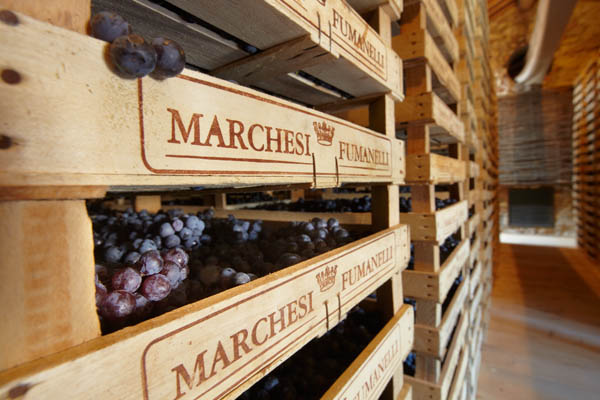
Amarone’s name, meaning “big bitter”, was apparently invented in 1936 by Adelino Lucchese, winemaker at the Cantina Sociale Valpolicella, when he declared of a serendipitously dry Recioto wine, “Questo non è un Amaro, è un Amarone” (“This is not a bitter wine, it is a big bitter wine”).
The Soave-based Bolla family claims to have been the first to market Amarone under that name. To commemorate the 80th birthday of Alberto Bolla on 13th April 1953, an Amarone Riserva del Nonno 1950 was bottled. This led to subsequent vintages being bottled and marketed as Amarone.
Three Gentlemen of Verona
In his Carmina No. 27, the Latin poet Catullus mentioned “calices amariores” (“bitter glasses”) in a lengthy passage on “the wine called Acinaticum, which takes its name from the acino berry…”
Catullus described how Acinaticum was made: “The grapes are selected from vines on locally managed pergolas, they are hung upside down, and they are stored in their amphorae, the regular vessels used. With time the grapes become hard but do not turn into liquid. They sweat out their insipid fluid and become delicately sweet. This continues until December when the winter begins to make their juice run, and, wondrously, the wine becomes new even as you find wine already mature in all the other cellars. The winter must – the cold blood of the grapes, the bloody fluid – (becomes) potable crimson, violet nectar. It stops boiling in its youth and when it is able to become an adult, it once again becomes new wine.”
More than 2,000 years later, this is more or less how Amarone is made today.
Two wines are possible from a process that involves drying Corvina, Rondinella and Molinara grapes on mats or shelves in special lodges called “fruttaia”. The drying process causes the grapes to lose water and thereby increase their (relative) sugar content. If there is some sugar left after fermentation, the wine is a Recioto. If fermented to dryness and retaining at least 14% alcohol the wine is Amarone. Grapes for these wines tend to be a selection of the best, which does not necessarily say much for the quality of the “normale” Valpolicella wine.
Over the last decade production of Ripasso and Amarone has increased while the production of Valpolicella has decreased. Between 2000 and 2003 production of Amarone doubled. By 2006 one-third of all Valpolicella grapes were being used to make this most expensive of Veronese wines. Funny that…
Big and bitter
Amarone is an expensive and painstaking wine to make. Grapes are selected and transported to the winery in single layers; they are dried and must be carefully monitored to prevent rot (which affects colour and acidity); the dried grapes yield only about half of what they would otherwise give; and the wine is aged for a significant period before release.
Historically Amarone was an oxidative and often volatile wine whose main attraction was its richness of flavour. Modern wines are much fresher and better counterpoise the forceful acidity, alcohol and bitterness that so characterise Amarone. But styles and quality vary tremendously – this is Italy, after all.
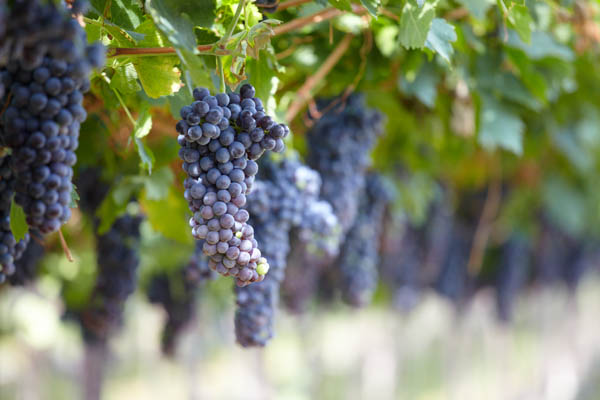
Tasting notes
These wines are a selection of the best examples tasted during my visit to Valpolicella in January 2012.
The older examples were often profound but, on the whole, as the Colonel says in Hemingway’s Across the River and into the Trees, “I believe that the Valpolicella is better when it is newer.”
Azienda Agricola Cà La Bionda
Fourth-generation winemaker Alessandro Castellani oversees this Marano Valley estate. Cà La Bionda’s vineyards contain only Corvina and Rondinella. If no Amarone is made the grapes are used to make Valpolicella “normale”.
The Amarone della Valpolicella Vigneti di Ravazzol Classico Riserva 2005 was sourced from a vineyard that lies at 200-300 metres above sea-level, with vines up to 70 years old. Not at all raisiny or extracted, it has 4 grams per litre of residual sugar – about as dry as it gets for Amarone. The prodigious 16% alcohol doesn’t undermine the crackling acidity and fleshy tannins. A chocolaty nose and mid-palate precede a dark and brooding finish.
Alessandro advised that this delicious Amarone is best drunk with 36-month old Parmesan!
Azienda Agricola Scriani di Cottini Stefano
With a few 50-year old vineyards planted at up to 350 metres above sea level at Fumane, this tiny estate typically ages its Amarone for 18 months in barrique, followed by eight months in “botte” and six in bottle.
My colleagues and I were fortunate to taste a vertical of this estate’s Amarone Classico. The 2008 has just been bottled and reeked of cardboard, which suggested a recent filtering. The fleshy, streamlined and tasty 2007 was much brighter than the oxidative (if not oxidised) 2006, a wine made using much more heavily toasted barrels than usual.
Amarone Classico 2004 showed some raisiness and was relatively short. The 2001 was an excellent example of mature Amarone – still fresh and with high voltage acidity.
Società Agricola Zecchini
Established at Valpantena in 1900, Zecchini produces only red wines – no Soave here.
The fine fruit of the Amarone Vigneto Calandra 2008 was muffled by wood, with tannins harder than a week-old loaf of bread.
Bolla
This vast, 50-million bottles per year Marano Valley enterprise was founded in 1883. It owns 50 hectares of vines in Bardolino but everything else in bought-in. For Amarone the grapes are dried at the growers’ facilities.
Amarone “Le Origini” is made to Bolla’s traditional “recipe”, as established by that 1950 bottling. The 2007 was a bit spirity on the nose, showing its 16.2% alcohol all too obviously. The garnet-orange colour suggested oxidation but the nose was fresher than might have been expected, even showing some mint aromas. The tannins were fluent and fine.
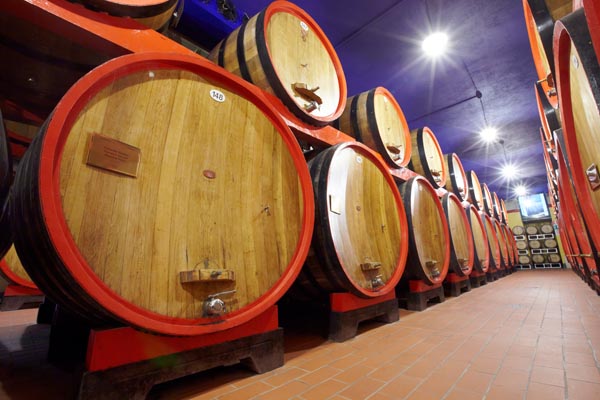
Azienda Agricola SalvaTerra
Brothers Eros e Lucio Furia have established 15 hectares of vines, at 500 metres above sea level, that surround the splendid 18th century Villa Pellegrini in the Negrar Valley.
The “basic” SalvaTerra Amarone Classico 2005 had a restrained nose and fleshy, wood-influenced tannins. It smelled of dried fruit but of cherries rather than grapes. Amarone Classico Riserva Tufaia 2003 was a bigger and more extracted wine, with more sugar and alcohol. The tannins were tinder-dry.
Società Agricola Tezza
Founded on the Valpantena plain in the 1960s, the Tezza family has been making Amarone since the mid-1990s. Three versions are made, with ever-increasing Corvina and alcohol levels.
A 2008 barrel sample of Amarone Corte Majoli was elegant and juicy, with the convulsive acidity that characterises the 2008 vintage. Corte Majoli 2007 was all dried fruits and dark chocolate. Its 14.76% alcohol seemed docile by comparison with the next two wines.
The bright cherry and herbal fruit of 2006 Tezza Amarone was not undermined by the firm tannins. Amarone Brolo delle Giare Riserva 2003’s whopping 16.9% alcohol did not detract from the puckish acidity and firm but fair tannins.
Azienda Agricola Fratelli Recchia
The Masùa di Jago Amarone Classico 2008, named after a hill that separates Negrar from Marano, was supple but rather woody.
A barrel sample of the Palazzo Bertoldi label’s Stefani Cà Bertoldi Amarone Classico 2008 will have, the titular brothers Riccardo and Roberto told us, probably another six months in tonneaux before two years in botti. Its youthful sweetness and fleshiness was very appealing.
The elegant but intense 2004 Cà Bertoldi needed longer to unfurl – maybe to 2020?
Azienda Agricola Giovanni Dindo
Located on Monte Sant’Urbano in Valpolicella Classico, with views of Garda and Verona, this winery is today run by Giovanni’s son Adriano and his grandson, also named Giovanni.
Refreshingly (in every sense), none of the four red wines made here are gilded by oak, with the exception of the Amarone, which is aged in second- and third-use barriques for 24 months.
Dindo’s Amarone 2008 was had a warm glow from its 16% alcohol but the shimmering acidity kept it vibrant.
The Recioto 2010 was an outstanding example of this style of Valpolicella – pure, sweet fruit and no wooden splinters.
Azienda Agricola Valentina Cubi
Giancarlo and Valentina Cubi founded their estate – now farmed organically – in 1969. A cellar was built in 2000 and in 2003 the first bottled wines were achieved.
Amarone della Valpolicella Classico Morar 2006 was sourced largely from limestone hills in Fumane, as evidenced in the exuberant tannins. The 2004 was softer and finer; the 2003 was typical of that overheated vintage – deeply coloured and with tannins that sweat rather than glow.
The elderly 1998 – the oldest Amarone tasted this week – was a bit oxidised but otherwise of great interest. It retained plenty of detail – a smooth texture, a warm finish and itchy tannins.
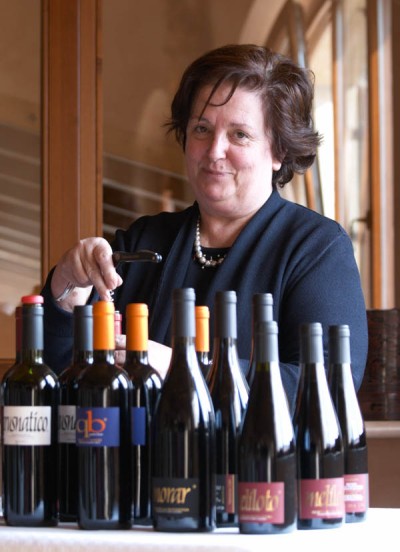
Cantina di Soave
The first and largest co-op of the Veneto made 32 million bottles made from its 6,000 hectares of vineyards in 2011.
“Rocca Sveva” is a winemaking programme initiated in 1995 to make wines to a superior standard than the usual co-op products. For example, the choice of growers is more restricted – to only 120!
The “basic” Amarone 2005 – a Riserva is also made – was not as potent as some but certainly no worse for it. It was coming along nicely. The 2001 was smooth and as taut as a guitar string.
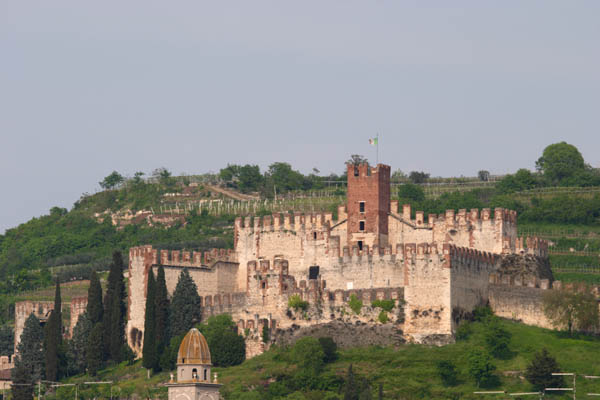
Massimago 1883
Massimago is a long-established estate, owned by the Cracco-Rossi Chauvenet family since 1883, but has produced wine only since 2004.
Camilla Rossi Chauvenet lives by herself – with occasional guests – in an isolated farmhouse surrounded by 10 hectares of undulating vineyards in the Valli Orientali. Her 2007 Amarone still had woody aromas – it needs longer. The 2008, which costs €48 a bottle at cellar door, was sweeter and juicier and much more friendly.
Perhaps the reason why Camilla lives alone is that her parents are teetotallers.
Stuart George is one of the contributors to BKWine Magazine. Read more of his articles by clicking on his name at the top of the page and on his site www.stuartgeorge.net.
[box type=”info” border=”full”]If you are interested in exploring the Amarone region, travel with BKWine and experience all the best the region has to offer![/box]
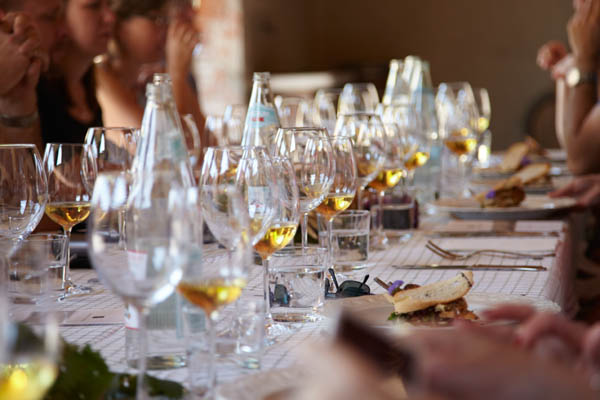
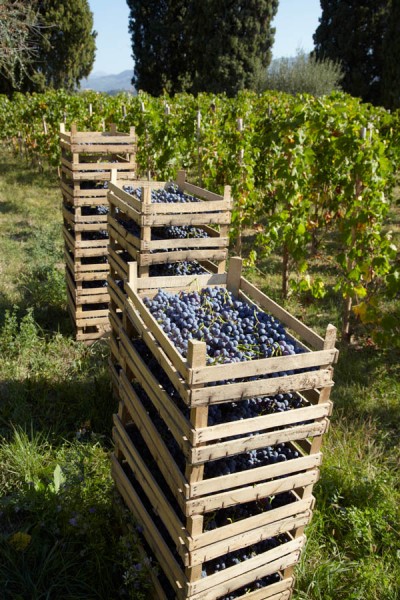
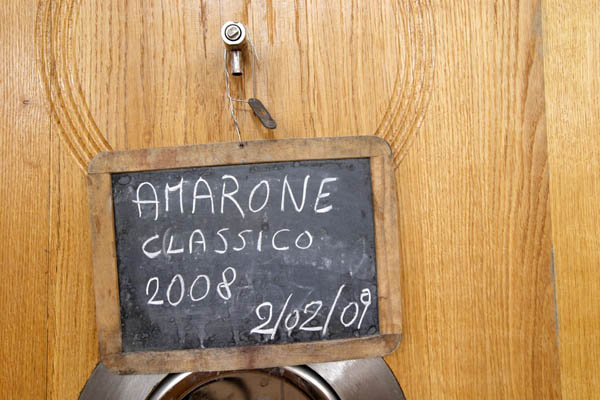



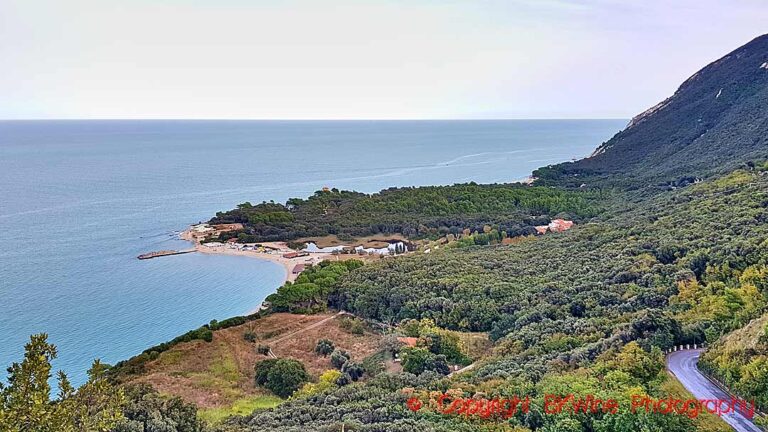
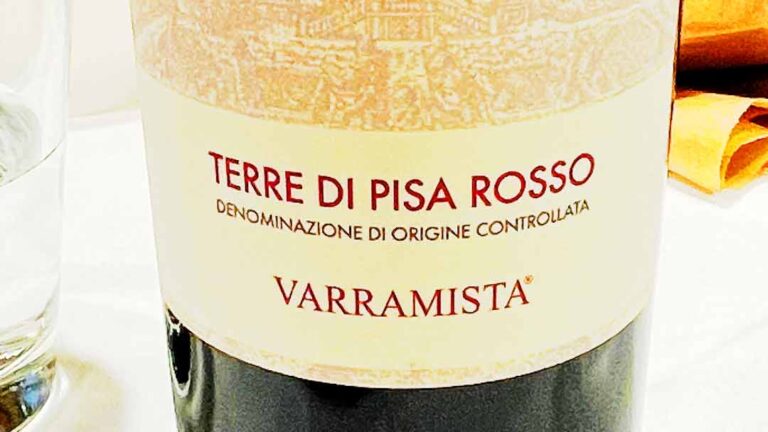
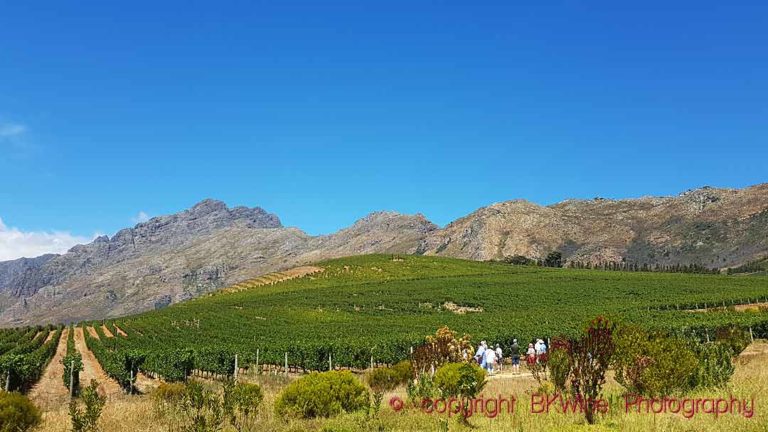






4 Responses
You’re wellcome to taste our Amarone in Negrar, in the Classico zone at Fratelli Vogadori family winery!
I’m a BIG MERONI fan, great Amarones from the old school